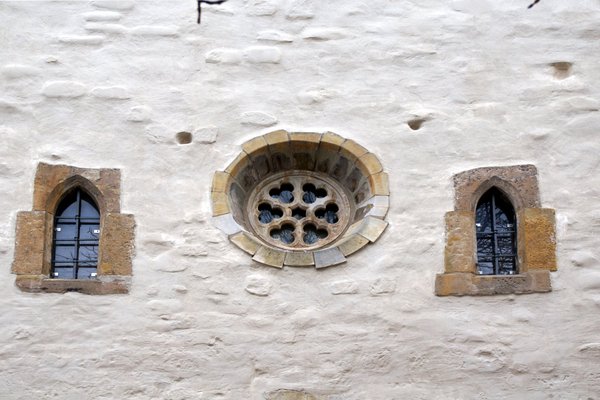Germany
Jewish-Medieval heritage of Erfurt
The Jewish-Medieval Heritage of Erfurt comprises three medieval Jewish buildings from the heydays of Jewish life in Central Europe.
The Old Synagogue, the Mikveh and the Stone House were embedded within the architecture of their Christian surroundings. The authentically preserved buildings are among the rare remaining examples from this period before the pogroms of the 14th century started.
Community Perspective: the synagogue has now opened as a museum and includes the display of the "Erfurt treasure". The mikveh can be visited by guided tour only (Saturday) and the (difficult to identify) stone house is closed to visitors.
Site Info
Official Information
- Full Name
- Jewish-Medieval Heritage of Erfurt (ID: 1656)
- Country
- Germany
- Status
-
Inscribed 2023
Site history
History of Jewish-Medieval heritage of Erfurt
- 2023: Inscribed
- Inscribed
- Type
- Cultural
- Criteria
- iv
Links
- UNESCO
- whc.unesco.org
- Official
-
- juedisches-leben.erfurt.de — Jüdisches Leben Erfurt
All Links
UNESCO.org
- whc.unesco.org — whc.unesco.org/
Official Website
- juedisches-leben.erfurt.de — Jüdisches Leben Erfurt
Community Information
- Community Category
- Archaeological site: Ancient Rome
- Urban landscape: Medieval European
Travel Information
Berlin hotspot
Saxony Anhalt hotspot
Recent Connections
-
Name changes
It lost the epic subtitle "Testimonies … -
Recently discovered
"The Mikveh was discovered by chance in… -
Saxony Anhalt hotspot
About 15 minutes by train from Weimar
Connections of Jewish-Medieval heritage of Erfurt
- Trivia
-
-
Smallest cultural WHS
The area of the originally nominated three component parts totals 0.04 ha (AB ev)
-
- World Heritage Process
-
-
Inscribed on a single criterion only
Crit iv -
Perfect Inscriptions
2023
-
- Religion and Belief
-
-
Mikveh
"The 13th century Mikveh, a structure purposely designed for ritual bathing" (AB ev) -
Jewish religion and culture
-
- Constructions
-
-
Protective Shelters
The Mikveh lies under a concrete protective building.
-
- Timeline
-
-
Built in the 12th century
Synagogue: "Four different phases of construction have been identified: firstly around 1100 CE and then in the early 12th century, the third phase around 1270, and then an expansion around 1300." (AB ev)
-
- WHS Hotspots
-
-
Berlin hotspot
Erfurt lies 1.5h by fast train from Berlin -
Saxony Anhalt hotspot
About 15 minutes by train from Weimar
-
- Science and Technology
-
-
Recently discovered
"The Mikveh was discovered by chance in 2007; it was excavated and treated for conservation between 2007 and 2011" (AB ev)
-
- WHS Names
-
-
Name changes
It lost the epic subtitle "Testimonies of every day life, religion and town history between change and continuity" during the transition from TWHS to nominated site.
-
News
No news.
Recent Visitors
Visitors of Jewish-Medieval heritage of Erfurt
- Adrian Turtschi
- aj
- Alexander Lehmann
- Ana Lozano
- Argo
- AS
- Atila Ege
- BaziFettehenne
- Bernard Joseph Esposo Guerrero
- Bill Maurmann
- Bin
- Can SARICA
- Caspar
- cflw
- christof
- Christoph
- Christravelblog
- Claire Bradshaw
- Clyde
- Csaba Nováczky
- CugelVance
- Daniel Chazad
- Daniel Gabi
- Danieljbromberg
- Dimitar Krastev
- Dimitrios Polychronopoulos
- Dolemite92
- Echwel
- Els Slots
- erdsaumnaht
- Errol Neo
- Eva Kisgyorgy
- Evgenii
- Farinelli
- Federico P.
- FK
- FrankW
- Frederik Dawson
- FS
- George Gdanski
- GeorgeIng61
- Harald T.
- henrik_hannfors
- heywhatever2
- Hubert
- Hurrvinek
- Ian Cade
- ih0000
- Ivan Rucek
- Jakob F.
- Janina Lehmann
- Janos
- Jarek Pokrzywnicki
- Javier Coro
- Jezza
- Jonas Kremer
- Kasia M.
- Kasper
- Kbecq
- Ken DJ
- Klaus Freisinger
- Knut
- Kristin
- Lara Adler
- Lisu Marian
- Luboang
- Lucio
- Luis Filipe Gaspar
- Maciej Gil
- Małgosia Łupicka
- Martina Rúčková
- Matejicek
- MaxHeAnouBen
- MaYumin
- Mikan22
- Mikko
- Miloš Tašković
- Mozzer76
- nan
- Niall Sclater
- Nick M
- Nicole Lampos
- Nihal Ege
- NoahFranc
- Patrik
- Paul Schofield
- Philipp Leu
- Philipp Peterer
- Piotr Wasil
- PlacesWeHaveBeenTo
- Purrfect
- Rafał Kałczuga
- Ralf Regele
- Randi Thomsen
- Reisedachs
- Reza
- Rick Ohm
- rogerding
- Roger Ourset
- Roman Bruehwiler
- Roman Raab
- Rudegirl
- Sebasfhb
- Sehnsuchtsbummler
- serghei.belous
- shoaibmnagi
- Stanislaw Warwas
- Svein Elias
- Szucs Tamas
- Tamara Ratz
- Taotao Chen
- Tarquinio_Superbo
- Thomas Buechler
- Thorben
- tony0001
- triath
- Tsunami
- Valentina
- viktor_balandin
- VLabhard
- WalGra
- Wojciech Fedoruk
- wrung24
- Xiquinho Silva
- Yang Chengyu
- Yevhen Ivanovych
- Zach
- Zhenjun Liu
- Zoë Sheng
- Zos M
Community Reviews
Show full reviews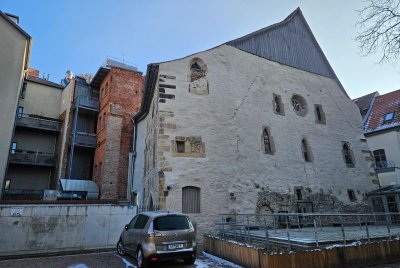
The site itself and its components have been covered extensively in the previous reviews. I will focus on the visitor experience in 2025.
All three components are right in the center of Erfurt next to its landmark, the Krämerbrücke. One day in Erfurt is enough to visit everything of interest, including a former Stasi prison and the churches (former tentative site). Erfurt was much nicer than I expected and deserves a stop, regardless of the WHS.
The old synagoge is now a museum only, meaning its open in Saturdays. Opening hours are 10:00-18:00, except Monday. The Germans seem to hate Mondays so much, the close the whole country that day.
To visit the Mikveh, you need to join a free public tour. You don’t really need to “join it”, but only the tour guide will open the door to give you access. There are tours every Thursday and Friday at 14:00. On Saturdays and Sundays, you can join the second part of the combined tour. Mikveh visit starts around 11:45.
We joined the full combined tour on Saturday, starting 10:15 and including the old synagoge. Only join this tour, if you are fluent in German. The tour is really detailed and reeeally long. We learned about every detail outside and inside the synagogue, including the treasure and all about the Jewish community in Erfurt during the middle ages.
Photography is only forbidden in the basement (because of the treasure). In all other parts of the …
Keep reading 0 comments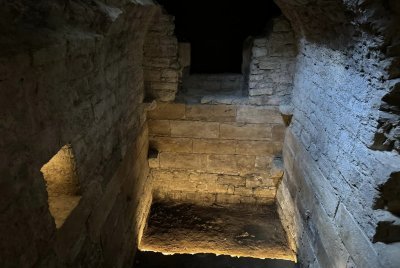
There was a large Jewish community in Erfurt, but in 1349 there was a pogrom, many Jews were killed, the rest were expelled, and property was taken. Apparently, this nomination became a kind of correction of this historical grievance, although very little of the Jewish heritage of those times has survived here. Basically, the object includes three buildings:
1) The old synagogue, which was converted into a warehouse after the pogrom, has survived. The famous Erfurt treasure is on display, with many silver coins and ornaments, as well as a Jewish wedding ring. According to the coins, the treasure can be dated to the time of the pogrom, it is clear that Jews tried to hide their property. Maybe because of the treasure, it is strictly forbidden to take pictures in the old synagogue. It also displays Jewish manuscripts that were taken during the pogrom in Erfurt, got into the Augustinian monastery, from where these sacred books were sold to the state library in Berlin. But only facsimiles of these books are on display.
2) Mikveh, a pool for ritual ablutions. I was a bit lucky here, because this mikveh can be seen only during group tours, just such a tour was taking place, I sneaked in quietly and took a couple of photos.
3) And one stone house, which belonged to the Jews, where a painted ceiling was found, was separately added to the list. How to get inside to see that ceiling is unclear.
…
Keep reading 0 comments
I stopped here today on my way to Berlin and visited both the Mikwe (there is an aboveground viewing window) and the old synagogue, with a small museum inside. Contrary to the other reviews here, I quite appreciated both the good fortune that led to the main building surviving, as well as the dedication that went into rescuing it, while still allowing all its uses over the centuries to be visible in the stone and wood.
Was it "big" and "impressive" like others? No, sadly not, and I do think the SchUM sites offer a more comprehensive look at German-Jewish history. However, I am glad it's preserved and honored, even if it's a smaller site than others.
That said, I would still quip that the entrance price (8 Euros) is a bit much for the size. If you want to avoid that you can see the main back stone facade from the side street, so it's easy to visit and check off for free if you wish.
Erfurt's old town is quite lovely and is worth visiting anyway, and this is not out of the way to visit at all.
Keep reading 0 comments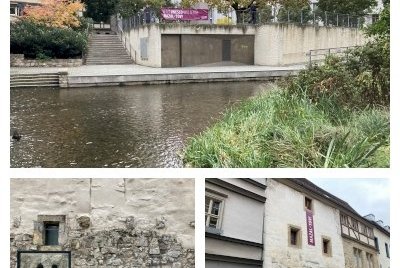
So I have the honour to first review this site after inscription! Fortunately, it wasn’t as gloomy as I expected it - instead of the celebratory “Wir sind Welterbe” banners common in Germany, the components of this WHS displayed happy purple signs stating “Jetzt UNESCO Welterbe - Mazal-Tov!”. Even the infamous Stone House (component #3), which was previously hard to recognize, now stands out in its street.
I don’t know whether Erfurt normally sees a lot of tourists, but on the Thursday in late October when I visited many tour groups were led through its historic center; mostly German, some Asian. I could overhear their guides talking about the newly gained World Heritage Status. I also happily explored its streets with its eclectic architecture, visited the Cathedral, the St Severus' Church, and the Citadel, and ate a hearty lunch. But after that, I couldn’t postpone the Jewish Heritage sites anymore.
The Old Synagogue seems to have gotten more accustomed to receiving visitors - you get a proper ticket plus an audio guide or a booklet on loan that explains the site and Erfurt’s Jewish history. One enters via a small courtyard and then has three floors to cover in the building itself. They did their best to fill it with relevant items and I seriously started reading in the provided guide, but after a few minutes it gets to you: there is nothing authentic of any relevance to be seen here. It’s like being in one of these …
Keep reading 0 comments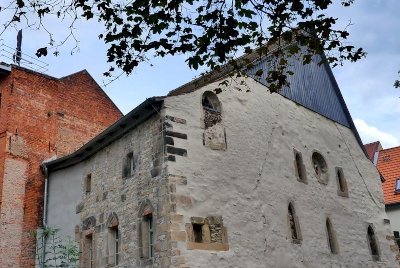
I visited this tentative WHS in August 2020 as a convenient stopover during my road trips to Poland. Perhaps due to the recent unexpected positive experience I had while visiting the synagogue in Zamosc, combined with the lack of hospitality shown by the old synagogue reception staff in Erfurt, I really did not enjoy my visit and sincerely hope this tentative WHS never makes it on the list as in my opinion it lacks any tangible OUV.
That said, at least I got some value out of the 8 euro entrance fee from the Erfurt treasure permanently displayed inside since 2009. The treasure was discovered in 1998 buried underneath the wall of a cellar entrance most likely during the pogrom of 1349. This is probably the main reason why the site is heavily guarded and photography inside is strictly not allowed. Bags (even very small ones) have to be left in free lockers at the reception. The old synagogue is closed on Mondays and entrance is free every first Tuesday of the month. The highlight of the Erfurt treasure for me was the intricate early fourteenth century Ashkenazi wedding ring. The ring features a beautifully crafted ornate miniature version of a gothic tower and six engraved Hebrew letters that spell out "mazal tov", meaning good fate or good luck, on the tower's roof. I have never seen anything like it.
The Jewish community of Erfurt first appears in historical records of the late 11th century with the Old …
Keep reading 0 commentsJakob F.
Jewish-Medieval heritage of Erfurt by Jakob Frenzel
Jewish-Medieval heritage of Erfurt (Inscribed)
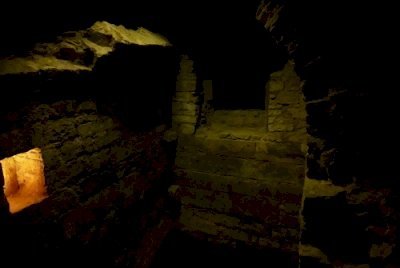
November 2019 - in my wife's business trip to Erfurt, my daughter and me joined to enjoy the area. Erfurt is a beautiful town. It has a quite unique cathedral, the Krämerbrücke is besides Florence and Bath one of the few bridges with houses on top. And there is also some Bauhaus, since Weimar is just around the corner. But for becoming a whs, Erfurt decided to nominate its jewish heritage. Two sites, that were only discovered lately during renovation. The Synagoge was built in between sheds, which now vanished. And the mikveh was covered with soil before. Therefore both sites are well preserved. We decided not to visit the Museum inside, but just have a glance from outside. The mikveh you can only see through a glass window. On a guided tour through Erfurt at evening, that was organized through the Business trip, I asked the guide about the mikveh. And...he knew the code to actually visit the interior. What a lucky chance. 1500 year old jewish stones.
However, I am not sure about the nomination. Erfurt is not like Trebic, but jews have only been part of the population. The sites propably have OUV. But please make some Serial nomination out of it.
Keep reading 0 comments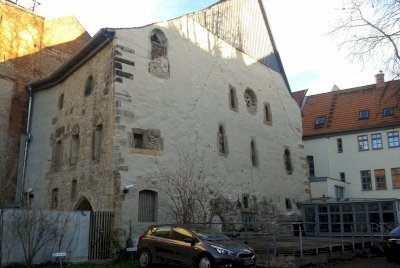
I think that this TWHS should be deleted or changed at least. Otherwise I do not fully understand the strategy of the state party of Germany.
There are 3 active sites on the German TWHS related directly to former Jewish communities: (1) Synagogue in Erfurt as one of the oldest, largest and best preserved synagogues in Central Europe, (2) ShUM as the important community of Ashkenazi Jews with origin deeply in Middle Ages, and (3) the cemetery in Altona as the second largest Sephardic cemetery outside Portugal.
It is not likely that all three sites will be inscribed, and I can see certain rivalry between Erfurt and ShUM: The ShUM nomination has been already submitted for year 2021, and it is cleverly stated there that “The lasting influence of the ShUM communities on Ashkenazi Judaism is attested to this day by major monuments – e.g. the excellently preserved religious buildings (the synagogue and the ritual bath) in Erfurt and the mediaeval Jewish monuments in Regensburg, Vienna and Andernach.”
The justification of the Altona cemetery plays a different game stressing not Ashkenazi but its Sephardic character.
I am afraid that these are only political games, and interest about the genuine OUV lies aside, and it is somehow hidden in the elaborated phrases. All it is about the fact, that there is only one WHS in Europe focused (almost) only on the Jewish testimony – Třebíč. The rest Jewish monuments are parts of much bigger urban ensembles, as …
Keep reading 0 comments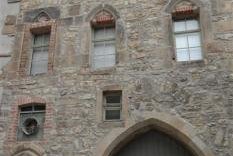
As mentioned in the review below, the building has not been used as synagogue for a very long time, but rather as warehouse and restaurant/ballroom. In the picture, you can still see the ventilation system from the restaurant. Because the building was no longer recognisable as a synagogue, it survived the Third Reich.
We visited the museum on a Tuesday to find out that the entrance was free (don't know if this true for every Tuesday), including a guided tour. The tour was given by two women, one specialist in judaism and one muslima who both explained the history of the synagogue & the rituals of both religions.
Although certainly interesting, we also feel that the site lacks outstanding universal value to be recognised as a WHS.
Keep reading 0 comments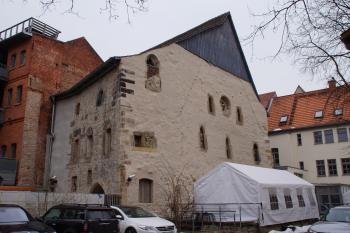
The subtitle sounds a bit overblown and boastful compared to what this T-list site actually includes, namely a synagogue, the ruins of a ritual bath and a secular building. The photo shows the synagogue, it is the same view as in the photo of the Wiki article and the same view as in almost all photos that can be found on the web, indicating that there is not much more to see. The oldest parts of the building have been dated back to the late 11th century, but nothing inside is reminiscent of the original use. At least the façade with the lancet windows and the rosette looks like a religious building. After the pogrom in 1349, the building was used as a warehouse for several centuries, later as a restaurant with a ballroom. Therefore, it was no longer recognisable as a synagogue for a long time. In the 1990s, the Old Synagogue was rediscovered, renovated in the following years, and opened as a museum in 2009. The museum shows medieval Hebrew manuscripts and models documenting the architectural history of the synagogue. The most important exhibit is the Erfurt Treasure, consisting of silver coins and gold and silver jewellery. The treasure was hidden by a wealthy Jew in 1349 and rediscovered in 1998. The ballroom from the 19th century can still be seen on the upper floor.
Not far from the synagogue is the ritual bath, or rather its ruins. The ruins were discovered and excavated only a few years …
Keep reading 0 comments
